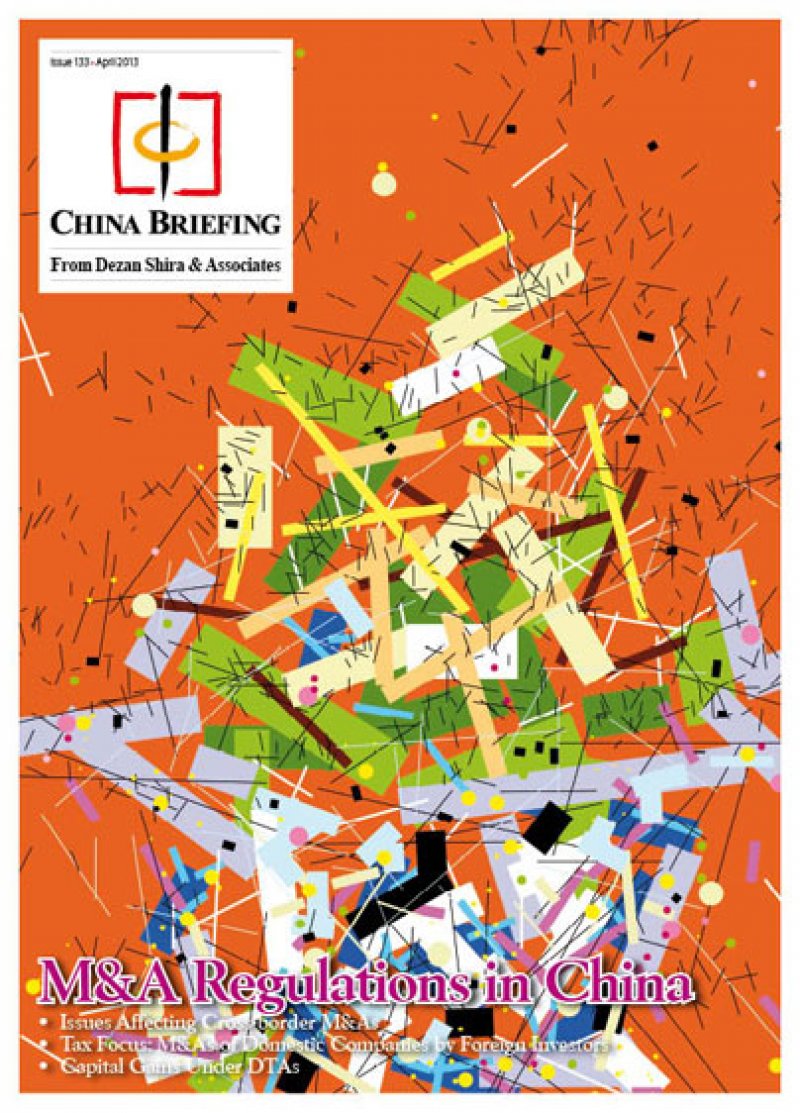
Merger & Acquisition Regulations in China
Published: April 2013In this issue of China Briefing, we return to a popular subject - China’s M&A regulatory framework. With the global economy slowly coming out of recession, and Chinese businesses wanting to expand both domestically and overseas (both issues driven by state policy), we expect to see a gradual upswing in the number of M&A deals being conducted with Chinese companies in the forthcoming months.
In this issue:
- Issues Affecting Cross-Border M&As
- Tax Focus: M&As of Domestic Companies by Foreign Investors
-
Capital Gains Under DTAs
In this issue of China Briefing, we return to a popular subject - China’s M&A regulatory framework. With the global economy slowly coming out of recession, and Chinese businesses wanting to expand both domestically and overseas (both issues driven by state policy), we expect to see a gradual upswing in the number of M&A deals being conducted with Chinese companies in the forthcoming months.
However, the subject of M&As in China is far from simple, and many important aspects tend to get glossed over. In actuality, there are many issues to be aware of, such as how to stay in compliance with the offshore equity transfer requirements set forth in Circular 698, and how to structure a transaction so as to minimize your China tax obligations. These matters should be fully understood by foreign investors when targeting domestic companies.
In this issue, we focus on the regulatory issues affecting cross-border M&As, and the key tax points foreign investors should be aware of when conducting M&As involving domestic Chinese companies. More specifically, we discuss the use of so-called “special purpose vehicles” and how China’s general anti-avoidance rules and related regulations are translating into increased scrutiny over offshore equity transfers by the Chinese tax authorities. We also address the key aspects of transfer pricing, corporate restructuring exemption, and valuation as they relate to M&As.

